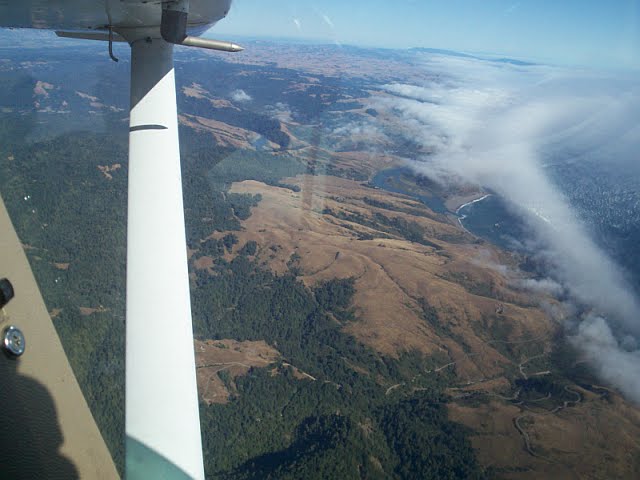Science: Skill, esp. reflecting a precise application of facts or principles; proficiency.
Lunacy: Insanity, especially insanity relieved intermittently by periods of clear-mindedness.
If I have a common theme to this learning process it is the challenge of comprehension and retention. First you have to understand a subject and then you have to remember it. A seemingly simple mental process that constantly confounds me.
My wife and co-pilot has commented, "Gary, your problem is that you have this need to know EVERYTHING about a subject you're studying. Just learn what you NEED to know and move on. Otherwise, you will drive yourself crazy."
On one hand, she definitely has a point.
I don't need to know everything there is to know about the engine in my Jeep just to change the oil. I get that, though sometimes, I forget that.
Yet when it comes to the art and science of flight, I have a fear that NOT knowing EVERYTHING will kill me.
I have reviewed the subject of Holding Patterns many times in the past. So, when I approached the subject, once again, I was expecting a speedy review of that which I already knew. Once again, however, the limitations of my feeble brain became obvious.
I think part of the problem of learning any subject on flying is the limitations of any single source of material. I have found that there is no one book, video or learning tool that will teach you all you need to know on any particular subject. Holding patterns is a good example. I have reviewed the FAA Instrument Flight Manual, Rod Machado's Instrument Pilot's Survival Manual, The Instrument Flight Training Manual by Peter Dogan and various online sources dealing with holding patterns. Not one of these sources, by itself, clearly covered everything there is to know about learning holding patterns.
The following summarizes everything I have been able to document to date on the subject. The drawings I created using Autocad.
Holding Patterns - The Important Stuff
Treat all lines as radials coming out of the fix and write them down
During any parallel entry the first outbound leg is flown on the non-holding side of the course
The outbound turn is begun at the fix
The holding course is the course on which the inbound leg is flown
The inbound leg is one minute long
The outbound leg is adjusted to compensate for the wind so that the inbound leg is one minute long
Abeam is the position opposite the fix where timing of the outbound leg begins
A standard hold is where all turns are to the right
Max holding speeds
- to 6000 msl 200 kts
- 6000 to 14000 230 kts
- 14000 and above 265kts
The zone of ambiguity is the region close to the line that separates the To \ From areas. This is where the flag reads Off
The Cone of Confusion is directly over the station and widens with altitude
Use a 20 - 30 degree intercept angle if you over shoot the course
Say " turn time twist throttle talk " each time you cross the fix or
turn inbound
Ask yourself which side of the fix you are on - holding or non-holding?
Holding Clearance includes:
- The word "hold"
- A direction to hold from the fix
- The name of the fix
- A course
- Leg length
- The direction of the turns
- Expect Further Clearance time (EFC)
“Hold west of STS VOR on the 300 degree radial, one minute legs, left turns. Expect further clearance at 1800.”
Note that the statement to “hold west” is redundant. There is no other way to hold on the 300 degree radial. It is provided to help the pilot avoid holding on the wrong side of the fix.
- Draw the fix
- Draw the hold course with an arrow pointing to the inbound course
- Draw direction of turn - standard is right hand and is assumed if no direction is mentioned in the clearance
- Indicate the planes location in relation to the fix and visualize the entry. If a teardrop entry is required determine the initial heading
When orienting from a VOR mentally rotate the aircraft to the desired course on order to correctly interpret he CDI
Practice intersection holds
Practice intersection holds with a single VOR (two are typically required) (equipment failure)
Inbound leg above 14000 feet is 1.5 minutes.
I created the following diagrams to help me review the various patterns both now and in the future.
The basic holding pattern and naming conventions:
VOR indications from various points in the holding pattern
The direct entry procedures
The parallel entry procedures
The tear drop entry procedures
Gary Welch













